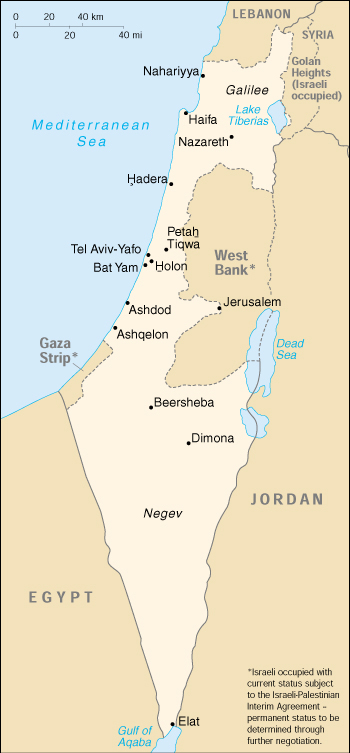

Status Quo Side: Israel
Non-Status Quo Side: Arab States
Region: Middle East
Conflict Type: Interstate
Issues in Dispute: Ethnic, Strategic, Territory
Tension between Israel and bordering states remained high after the 1970 ceasefires [see AIW]. Fearing Israeli reprisal for hijacking and hostage-taking by PLO guerrillas based in Jordan, King Hussein cracked down on the PLO in the so-called "Black September". Syria sent tanks into Jordan, but the Jordanian air force, with tacit US-Israeli support, stopped the invasion. Most of the PLO moved to Lebanon [see LEB and LBN]. Egyptian President Anwar Sadat, who replaced the deceased Gamel Abdel Nasser in October, sought Israeli withdrawal to the 1967 boundaries. When the US-USSR summit in 1972 produced no new Middle East plan, Sadat expelled Soviet advisors, freeing Egypt from Soviet pressures for restraint. Sadat, on November 14 1972, promised his party an attack on Israel within a year.
Despite inferior strength, Syria and Egypt launched a joint surprise attack on Israel which lost 49 jets and 500 tanks and suffered 2,000 casualties. The USSR airlifted arms to Syria and Egypt, Jordan and Saudi Arabia providing minor assistance. As Israel's situation weakened, the US began a massive airlift. Israel crossed the Suez Canal October 15-16, threatening to isolate Egypt's 3rd Army Corps. Both the US and USSR pressed for a cease-fire, and Secretary of State Henry A. Kissinger flew to Moscow, giving the Israelis time to consolidate. Ignoring an October 22 UN ceasefire resolution and US pressure, the Israelis pressed forward. On October 24 the USSR sent the US an ultimatum threatening unilateral intervention. In response Nixon/Kissinger placed American forces on worldwide alert. Sadat defused the situation the next day by agreeing to a UN peacekeeping force, UNEF II, and subsequently negotiated directly with Israel.
Kissinger initiated shuttle diplomacy with Egypt, Syria and Israel, while excluding the USSR. Israel signed a disengagement agreement with Egypt on January 18 1974, and with Syria in May providing for a UN disengagement force on the Golan Heights (UNDOF). Sadat's dramatic visit to Jerusalem in November 1977, and President Jimmy Carter's success in brokering the Camp David Accords of September 1978 paved the way for the March 1979 Egyptian-Israeli treaty.
Egyptian withdrawal from the Sinai was completed in 1982. Title to Taba was resolved by arbitration in favor of Egypt in 1989 [see TAS]. Israel continued to occupy Syria's Golan Heights monitored by UNDOF, but Jordan signed a peace treaty with Israel in October 1994.